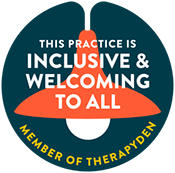Pregnancy is often portrayed as a joyful and exciting time, but for many couples, it can also bring unexpected stress, anxiety, and emotional challenges. Hormonal changes, physical discomfort, financial pressures, and the anticipation of becoming parents can create tension, misunderstandings, or even feelings of isolation within a relationship. These stressors are natural, but if left unaddressed, they can affect communication, intimacy, and overall emotional well-being for both partners.
Working with a couples counselor here at Anchor Therapy offers you and your partner a structured, supportive space to navigate these challenges together. Through perinatal or couples therapy, partners can learn effective communication strategies, manage anxiety, and develop shared coping skills to handle the unique pressures of pregnancy. It is not just about resolving conflict, it is about strengthening connection, fostering mutual understanding, and preparing both partners emotionally for the transition into parenthood. By addressing stress as a team, couples can create a healthier, more resilient foundation for their growing family.


















